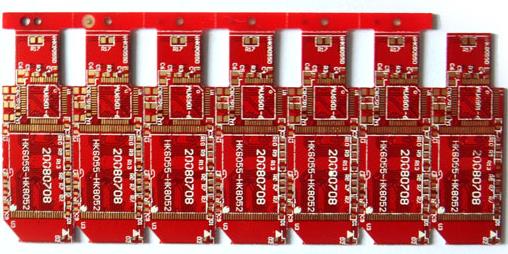The PCB design is based on the circuit schematic diagram to realize the functions required by the circuit designer. The design of the printed circuit board mainly refers to the layout design, and the layout of external connections needs to be considered. Optimized layout of internal electronic components. Optimized layout of metal connections and vias. Electromagnetic protection. Various factors such as heat dissipation. Excellent layout design can save production costs and achieve good circuit performance and heat dissipation performance. In the PCB design process, the following issues should be paid attention to:
1. Overlap of pads
1. The overlap of the pads (except the surface mount pads) means the overlap of the holes. During the drilling process, the drill bit will be broken due to multiple drilling in one place, resulting in damage to the hole.
2. Two holes in the multilayer board overlap. For example, one hole is an isolation disk and the other hole is a connection pad (flower pad), so that the film will appear as an isolation disk after drawing the film, resulting in scrap.
Second, the abuse of the graphics layer
1. Some useless connections were made on some graphics layers. It was originally a four-layer board but designed with more than five layers of wiring, which caused misunderstandings.

2. It saves trouble when designing. Take the Protel software as an example to use the Board layer to draw the lines on each layer, and use the Board layer to mark the lines, so that when the light drawing data is performed, the Board layer is not selected, and the board layer is omitted. The connection is broken, or it may be short-circuited due to the selection of the marking line of the Board layer, so the integrity and clarity of the graphics layer is maintained during the design.
3. Violation of conventional design, such as the component surface design on the Bottom layer and the welding surface design on the Top, causing inconvenience.
Third, the random placement of characters
1. The SMD soldering pad of the character cover pad brings inconvenience to the on-off test of the printed board and the soldering of the components.
Fourth, the setting of the single-sided pad aperture
1. Single-sided pads are generally not drilled. If the drilling needs to be marked, the hole diameter should be designed to be zero. If the numerical value is designed, then when the drilling data is generated, the coordinates of the hole appear at this position, and there is a problem.
Five, use filler blocks to draw pads
Drawing pads with filler blocks can pass the DRC inspection when designing the circuit, but it is not good for processing. Therefore, PCB proofing pads cannot directly generate solder mask data. When solder resist is applied, the filler block area will be covered by solder resist., Resulting in difficult device welding.
Sixth, the electrical ground layer is also a flower pad and a connection
Because the power supply is designed as a flower pad, the ground layer is opposite to the image on the actual printed board. All the connections are isolated lines. The designer should be very clear about this. By the way, when drawing several sets of power supplies or ground isolation lines, you should be careful not to leave gaps, short-circuit the two sets of power supplies, or block the connected area (make one set of power supplies separate).
Seven, the processing level is not clearly defined
1. The single-sided board is designed on the TOP layer. If the front and back are not specified, the manufactured board may not be easy to be soldered with components installed.
8. There are too many filler blocks in the design or the filler blocks are filled with very thin lines
1. The gerber data is lost, and the gerber data is incomplete.
Nine, the surface mount device pad is too short
This is for the continuity test. For a surface mount device that is too dense, the spacing between the two pins is quite small, and the PCB proofing pad is also quite thin. The test pin must be installed in a staggered position, such as The design of the pad is too short, although it does not affect the device installation, but it will make the test pin staggered.
10. The spacing of large-area grids is too small
The edges between the same lines that make up a large area of grid lines are too small (less than 0.3mm). In the printed board manufacturing process, after the image transfer process is completed, it is easy to produce a lot of broken films attached to the board, causing wire breakage.
11. The distance between the large area copper foil and the outer frame is too close
The distance between the large area copper foil and the outer frame should be at least 0.2mm, because when milling the shape of the copper foil, it is easy to cause the copper foil to warp and the solder resist falling off caused by it.
12. The design of the outline frame is not clear
Some customers have designed contour lines in Keepoutlayer, Board layer, Top over layer, etc., and these contour lines do not overlap, which makes it difficult for PCB manufacturers to judge which contour line shall prevail.
13. Uneven graphic design
When pattern plating is performed, the plating layer is not uniform, which affects the quality.